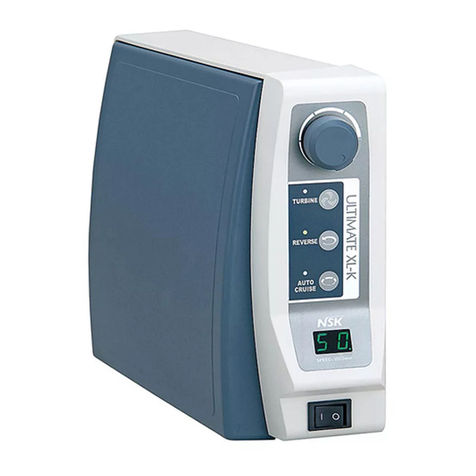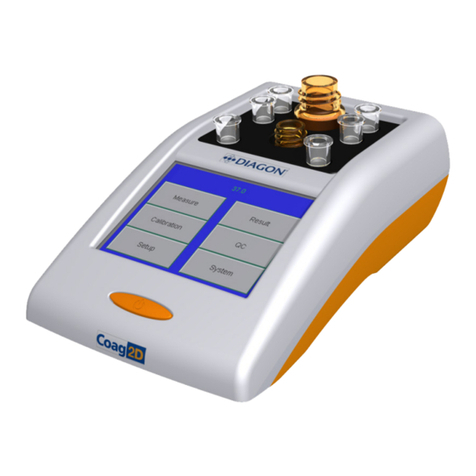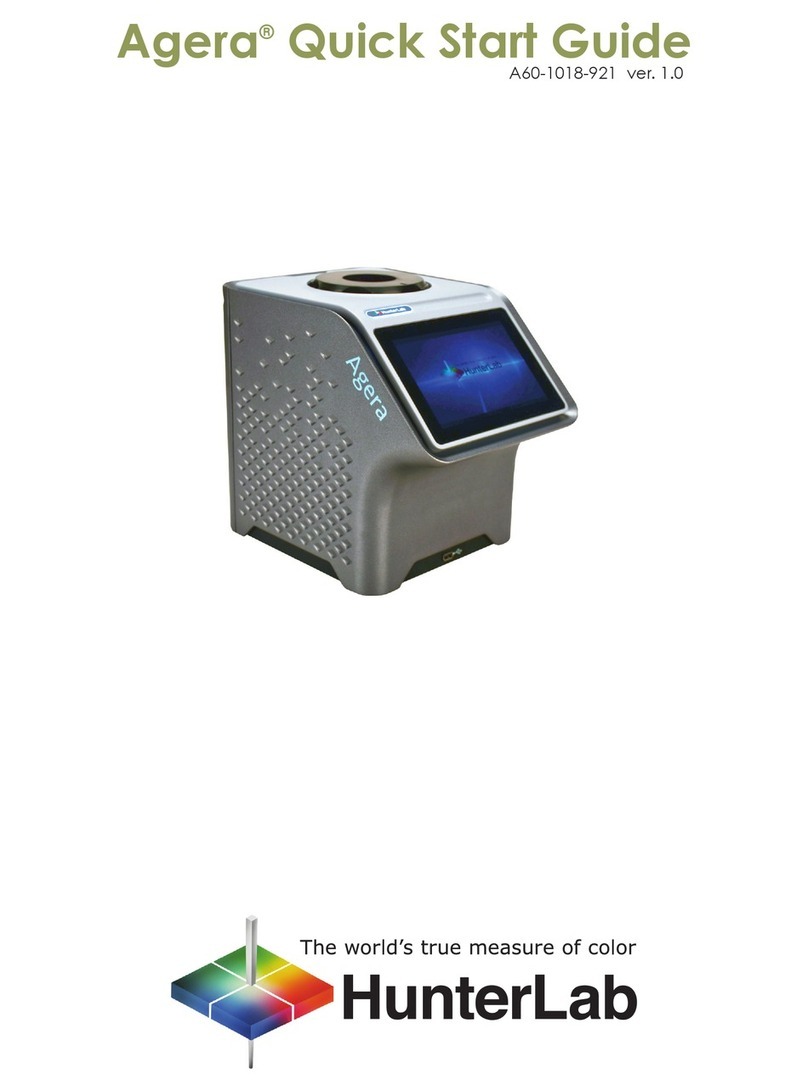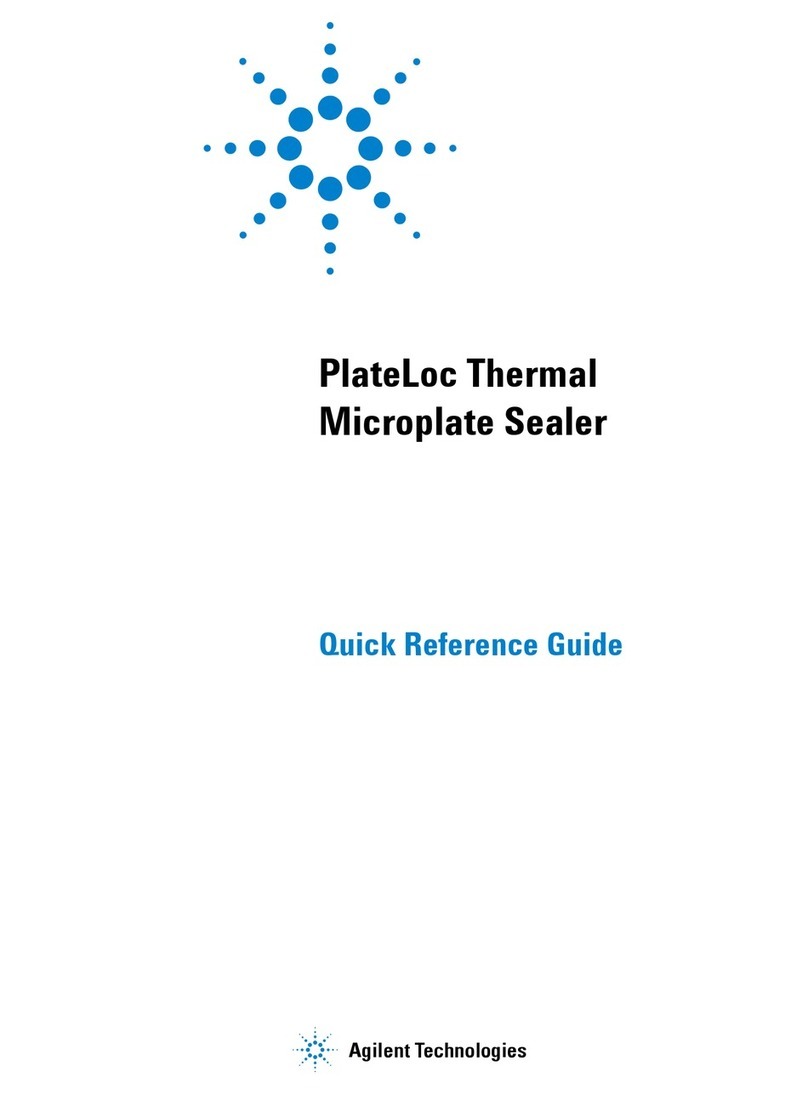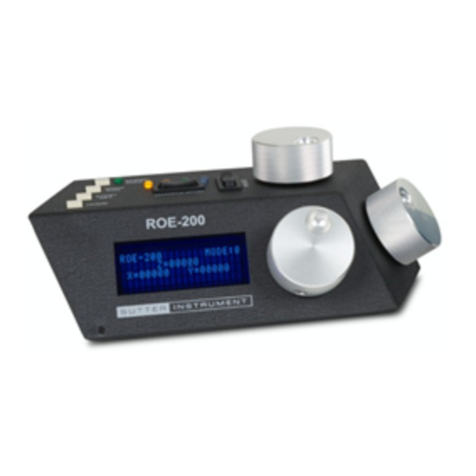Priorclave Q63 Manual

Priorclave Manual 27125322-EN Issue 2 06/06/2012
Operation & Maintenance
Manual
Q63 Priorclaves
Electrically Heated


Priorclave Manual 27125322-EN Issue 2 06/06/2012
1
Introduction
Priorclave autoclaves are a range of general-purpose laboratory autoclaves intended primarily for
media preparation, the making safe of ordinary laboratory and pathological waste and other
apparatus sterilisation purposes. The autoclaves are manufactured to a high standard and feature a
number of patented innovative design features. The sophisticated TACTROL microprocessor control
system provides a very simple method of setting even the most complex cycles. The machines have
been designed from the outset for easy and safe operation and maintenance.
Properly looked after and serviced your autoclave should give years of valuable and trouble free
service.
Priorclave Service
Serial Number:
Date of Manufacture:
Software Version:
Please quote the above when asking for parts or service:
PRIORCLAVE LIMITED
129 -131 Nathan Way
West Thamesmead Business Park
London
SE28 0AB
Telephone: +44 (0)20-8316-6620
Fax: +44 (0)20-8855-0616
Website: www.priorclave.co.uk
or your local service agent:

2
Symbols used in this manual and their meanings
WARNING: Mechanical Hazard
In this manual, warnings draw attention to the potential for Danger to personnel up to and
including risk of severe injury or death. Each Mechanical Hazard Warning is emphasised by the
icon to the left.
WARNING: Electrical Hazard
In this manual, warnings draw attention to the potential for Danger to personnel up to and
including risk of severe injury or death. Each Electrical Hazard Warning is emphasised by the
icon to the left.
WARNING: Bio-hazard
In this manual, warnings draw attention to the potential for Danger to personnel up to and
including risk of severe injury or death. Each Bio-hazard Warning is emphasised by the icon to
the left.
Caution: -Please Note
In this manual, cautions draw attention to the potential for Damage to equipment. Each
caution warning is emphasized by the icon to the left.

Priorclave Manual 27125322-EN Issue 2 06/06/2012
3
Important Notices and Warnings
Priorclave Pressure Vessels and Autoclaves are manufactured according to BS2646 Part 1
(1993). It is recommended that the user/operator ensures that the autoclave is installed,
operated, maintained and tested according to parts 2,3,4 & 5 of this standard for safe and
effective use and that an adequate logging record of operation and maintenance be
established.
Before despatch from our works all Priorclaves are subjected to rigorous electrical safety tests
to the appropriate standards. Should you or your contractors carry out further insulation and
flash tests as part of your internal procedures please disconnect the switch mode power
supply before testing. Failure to do so will result in a test failure and may lead to corruption of
the microprocessor memory which cannot be covered by our warranty.
Safety
If you are unclear about any aspects of this manual, the use and operation of the autoclave or
your autoclave process please contact Priorclave or your authorised Priorclave dealer before
proceeding.
Always wear gloves a facemask and adequate protective clothing when unloading an
autoclave and ensure that the workload does not exceed safe limits.
Priorclave are pleased provide training for operators in the use of their autoclaves at a small
extra charge.
Thermal Lock
The safety Thermal Lock (80
o
C door retention device) has been set in accordance with the
load and procedure defined in paras. 3.3.3.2.3 and 3.3.3.3 of BS2646 Part 5:1993.
The relatively light load defined under this procedure may not be appropriate to the load to
be autoclaved in your Priorclave. Therefore, to ensure compliance with Health & Safety
Executive Guidance Note PM73 ‘Safety at Autoclaves’ and to avoid possible injury you are
strongly advised to have your autoclave with its normal working load formally validated, and
the thermal lock set up accordingly by properly trained personnel.
Stainless Steel Pressure Vessels.
Vessels are manufactured from grade 316 stabilised stainless steel, designed built and tested
in accordance with PD5500 category 3 as required by BS2646 Part 1. Grade 316 stainless steel
is employed to reduce the corrosive effects of substances such as hydroxides and chlorine.
However we recommend that the interior of the vessel is kept free of such potentially harmful
substances and is regularly cleaned out with soft water. The use of chlorine based or other
aggressive cleaners is not recommended. Exposure to such chemicals could damage the
surface finish and the integrity of the pressure vessel and door. Care should also be taken not
to routinely introduce such chemicals where they are used to pre-wash items that form part
of the load. In such cases the items should be thoroughly rinsed before autoclaving.
Product Life
Due to fatigue occurring in normal use the life of all pressure vessels is finite regardless of
corrosion, erosion or other damage. Using calculations from PD5500, and assuming working at
the maximum working pressure of 2.4 bar this gives the autoclave vessel a projected fatigue
life of 15,000 operating cycles. The lifespan of the autoclave will obviously depend upon
frequency of use, but for example (based on a 365 day working year) if the autoclave is used
two or four times per day this gives a working life of 20.5 to 10.2 years respectively. Your own

4
usage of the autoclave should be considered to determine the actual lifespan of the
autoclave.
Cleaning
This equipment contains sensitive electrical equipment. Although designed to withstand
laboratory conditions it is not designed for wet cleaning. Cleaning this equipment by hosing
down may cause damage, invalidating the warranty, and may cause an electrocution hazard.
External cleaning should be carried out with a damp cloth or with proprietary, non-abrasive
cleaners.
Water Supply and Quality
This autoclave has been designed to operate most effectively with a softened water supply.
Connection to a hard water supply can lead to a build up of scale and will damage the heaters
and other parts of the system and could invalidate the warranty.
Equally demineralised, distilled or RO water supplies should not be used with this autoclave as
the controls fitted rely on electrical conductivity to detect water levels.
RO water will damage some elements of the generator system.
Servicing and Maintenance of Priorclave Autoclaves
Priorclave Laboratory Autoclaves are complex pressure systems designed and built to special
regulations and as such should only be serviced or maintained by properly trained personnel.
Priorclave Ltd. cannot be held responsible for hazards or damage resulting from work carried
out on the pressure system including its closure components by untrained or unauthorised
personnel. If in doubt please contact Priorclave Service or your nearest authorised service
agent.
Marking
The mark applied to this autoclave is applied in relation to the EMC (Electromagnetic
Compatibility) directive and the Low Voltage directive of the European Community. This
indicates that this Priorclave autoclave meets the following technical standards:
BSEN61000-6-3:2001
Electromagnetic Compatibility. Generic Emission Standard. Residential, Commercial & Light
Industry.
BSEN61000-6-1:2001
Electromagnetic Compatibility. Generic Immunity Standard. Residential, Commercial &
Light Industry.
BSEN61010-1:2001
Safety Requirements for Electrical Equipment for Measurement, Control and Laboratory
use.
BSEN61010-2-040:2005
Safety Requirements for Electrical Equipment for Measurement, Control and Laboratory
use; Part 2-041, Particular Requirements for Autoclaves using Steam for the treatment of
Medical Materials and for Laboratory Processes.
Pressure vessels
PD5500 2009
Unfired fusion welded pressure vessels
BS2646 1996

Priorclave Manual 27125322-EN Issue 2 06/06/2012
5
Autoclaves for sterilisation in laboratories
Conformity assessment modules B1 + D of the European Pressure equipment directive have
been applied to ensure compliance with the essential safety requirements.
A “Declaration of Conformity” in accordance with the above standards has been made and is
on file at:
Priorclave Ltd.
129 /131 Nathan Way
West Thamesmead Business Park
London SE28 0AB
Environmental Conditions
This equipment has been designed for safe operation within the following environmental
conditions:
Indoor Use.
Altitude up to 2,000 M. (See Appendix B - Steam Table for special conditions affecting
calibration for operation at elevated altitudes).
Temperatures between 5
o
C and 27
o
C. - The cooling performance of Air Cooled autoclaves,
however will be significantly affected at higher temperatures in this range.
Maximum Relative Humidity of 85% at any temperature between 5
o
C and 40
o
C.
Mains Supply Voltage Variations not exceeding
+
/
-
10% of that shown on the Serial Plate.
Electromagnetic Interference
This equipment has been designed to comply with the requirements for immunity from
electromagnetic interference under normal conditions of use. Care should be taken when
positioning the equipment however, to avoid interference from potential extreme sources of
interference such as MR scanners or x-ray equipment.
Hazard Statement
Electrical Hazard Stickers
When this sticker has been placed on a removable panel the power must be
switched off before the panel is removed. There may be a number of areas
behind the labelled panel that constitute an electrical shock hazard. All such
panels are service access panels only and should not be removed unless
there is a full understanding of the equipment.

6
Date of issue: 30/04/2007 Revision No: 2
Place of issue: Manufacturers works Reference: ecdecs\RSC – PED assembly
EU Declaration of Conformity
This is a global declaration relating to the entire pressure equipment of the product range
identified below
Equipment Manufacturer: Priorclave Ltd
129-131 Nathan Way
West Thamesmead Business Park
London, SE28 0AB, UK
Equipment Description:
Priorclave Laboratory autoclaves – Q63 series, with Tactrol microprocessor control system.
Model Numbers:
PS/Q63/EH320. For direct steam heated variants substitute S for E. All models may be suffixed DBL to denote double
entry versions
Conformity Data:
Directive Relevant standards Comments
Low Voltage Directive
72/23/EEC
EN61010-1 2001997
BS EN 61010-2-040:2005
EMC Directive 89/36/EEC as
amended by 93/68/EEC
EN50081-1 EN50082-1
EN61326 1997 (+A1/A2)
Technical construction file ref EMCTCFAU
Competent Body: Inchcape testing Ltd
Manfield Park
Cranleigh
Surrey
Testing conducted in 2004 without certification by a
competent body.
Pressure Equipment
Directive 97/23/EC
Conformity assessment
Modules B1+D
PD5500 2000
BS2646 1993
Notified Body No 0037
Zurich Risk Services
Park House,
Bristol Road South,
Rubery
B45 9AH
Approval references:
Vessel (module B1)
Certificate numbers CEN-
030021/B1
Manufacturing (module
D) certificate number
SS42072280-01
Declaration:
Priorclave Ltd declares that the above products conform with the essential requirements of the above directives.
Where appropriate this has been demonstrated by the application of the relevant standard(s). The CE mark was first
affixed to these products in 1996
Signed for and on behalf of Priorclave Ltd
Terry Ashenden
Technical Director.

Priorclave Manual 27125322-EN Issue 2 06/06/2012
7
Contents
Introduction .........................................................................................................................................1
Symbols used in this manual and their meanings..................................................................................2
Important Notices and Warnings..........................................................................................................3
EU Declaration of Conformity ...............................................................................................................6
Contents ..............................................................................................................................................7
Layout Diagram ....................................................................................................................................9
Operating Summary ...........................................................................................................................10
Cycle Abort and Thermal Lock Override................................................................................................. 11
Preparing Your Priorclave for Use for the First Time ...........................................................................12
Positioning .............................................................................................................................................. 12
Provision of Space and Access for Accessories....................................................................................... 13
Installation.........................................................................................................................................14
Electrical ................................................................................................................................................. 14
Drainage and Exhaust Gas Ventilation ................................................................................................... 15
General ................................................................................................................................................... 19
Initial Commissioning.............................................................................................................................. 20
Full Commissioning and Performance Qualification .............................................................................. 21
Operation...........................................................................................................................................22
Opening the Door ................................................................................................................................... 22
Automatic Timed Free-Steaming............................................................................................................ 25
Pulsed Free-steaming ............................................................................................................................. 25
Load Sensed Process Timing................................................................................................................... 26
Rapid Cooling.......................................................................................................................................... 26
Media Warming ...................................................................................................................................... 27
Delayed Start Time ................................................................................................................................. 27
Vacuum Options ..................................................................................................................................... 27
Multi Program Memory Options ............................................................................................................ 29
Vent button. ........................................................................................................................................... 30
During the process time. ........................................................................................................................ 30
Cooling .................................................................................................................................................... 31
Thermal lock ........................................................................................................................................... 31
Cycle complete ....................................................................................................................................... 32
Media Warming ...................................................................................................................................... 32
Aborting a Cycle...................................................................................................................................... 32
Changing Date & Time........................................................................................................................33
Operation with Options & Accessories ...............................................................................................34
Setting Lock Keyswitch Option ............................................................................................................... 34
Printer ..................................................................................................................................................... 34
Automatic Waterfill Option .................................................................................................................... 35
Air Intake Filter ....................................................................................................................................... 35
Vent Filter ............................................................................................................................................... 36
Internal Validation System ..................................................................................................................... 36
Heater Over-temperature Protection..................................................................................................... 36
Loading Trolley........................................................................................................................................ 36
Accelerated media cooling ..................................................................................................................... 37
Chart Recorder........................................................................................................................................ 37
Warning Indicators and Fault Codes ...................................................................................................38

8
Maintenance...................................................................................................................................... 40
Weekly Maintenance .............................................................................................................................. 40
Monthly Maintenance ............................................................................................................................ 42
Quarterly Maintenance .......................................................................................................................... 42
General Maintenance ............................................................................................................................. 44
Specification Table ............................................................................................................................. 47
Spares List.......................................................................................................................................... 48
Notes ................................................................................................................................................. 52
Appendix A - Fault Finding & Rectification Guide................................................................................ 53
Appendix B - Steam Table .................................................................................................................. 55
Appendix C - Wiring Diagrams ............................................................................................................ 57
Output Board Designations .................................................................................................................... 57
Standard Non-Vacuum Models............................................................................................................... 58
Standard Vacuum Models....................................................................................................................... 60
Appendix D - Pipework Schematics .................................................................................................... 63
Non Vacuum Models .............................................................................................................................. 64
Vacuum Models ...................................................................................................................................... 65
Appendix E - Other Options Fitted...................................................................................................... 67
Liquid Ring Vacuum pump VZ 30/50 Extracts from Operating Instructions........................................... 69

Priorclave Manual 27125322-EN Issue 2 06/06/2012
9
Layout Diagram
Control Panel Details
1
4
3
65 7
8 9
10
11
12
2
1. Cycle Progress Display
2. Door Button & Indicator
3. Vent Button & Indicator
4. Start Button & Indicator
7. Time Display & Setting Buttons
8. Program Buttons & Indicators (Optional)
9. Printer (Optional)
10. Setting Lock Keyswitch (Optional)
Tactrol Reset Switch Location
Locking Handle
Entry Port Access
Panel Location

10
Operating Summary
Before proceeding please check the specification sheet at the front of this manual to
establish which options and accessories, if any, are fitted to your Priorclave. This will
determine whether you will need to read the instructions for these options later in this
manual or in Appendix D.
1.
Check electricity and if required (automatic waterfill and/or vacuum models) water
supplies are connected and ON.
2.
Press the ‘Door’ button on the control panel there will be a bleep and the message ‘Hold’
will be displayed in the temperature display. Wait for a short time until the temperature
display returns to normal, there is another bleep and the door indicator illuminates. The
door button can now be pressed again to release the lock.
3.
Open the autoclave door as
described below:
a. Lift the locking handle up
b. The handle will now spring out
into its unlocking position
c. Lift the handle fully upwards to
unlock the door. The handle is
now in its safety lock position,
allowing any residue of pressure
inside the autoclave to escape
harmlessly.
d. Move the handle slightly down to
release it from the safety position
e. Push the handle in as far as it will
go
f. Move the handle fully upwards to
its parked position
4.
With the lid unlocked carefully pull
the door open
5.
Top up with water if necessary to
just below the weir at the front of
the autoclave.
(If the autoclave is fitted with an automatic filling system it will re-fill to the correct level
during loading and unloading)
6.
Load the autoclave with baskets or containers or directly onto the shelves.
7.
Set the temperature as required using the up/down keys.
9.
Set the process time as required using the up/down keys.
10.
Set / select other functions i.e. free-steam, rapid cooling etc., as required and if fitted.
11.
Carefully close the pressure door and secure as follows:
a) Door Locked
Position
f) Door unlocked
Position
b) Spring
Release
Safety Lock
Position –
WAIT!
c) Unlock
d) Safety Lock
Release
e) Push in
Door opening procedure

Priorclave Manual 27125322-EN Issue 2 06/06/2012
11
a)
Move the locking handle down to
release it from its parked position
b)
The locking handle will now spring
out
c)
Move the locking handle down to
lock the autoclave door
d)
Push the handle in fully against the
spring
e)
Move the handle fully down into its
‘park’ position
12.
Wait a few seconds for the ‘Start’
indicator to illuminate and press the
‘Start’ button to begin the cycle.
Cycle Abort and Thermal Lock Override
Aborting a cycle
To abort the cycle at any stage press the ‘Start’ Button
Thermal Lock Override
First abort the cycle as above.
After checking that there is no pressure within the autoclave turn the thermal lock key to the
right hold it there.
Press the ‘Door’ button once, keeping the thermal lock key held over.
Wait during the ‘Hold’ display until the ‘Door’ indicator illuminates.
Keep the key held and press the ‘Door’ button once to unlock the door.
The key-switch can now be released and the door opened as above.
If the key is released at any stage the procedure must be repeated to open the door and reset
the display.
e) Door Locked
Position
a) Door unlocked
Position
b) Spring
Release
c) lock
d) Push in
Door closing procedure

12
Preparing Your Priorclave for Use for the First Time
Unpack the autoclave and check against the delivery note that all items ordered have been
delivered.
Any shortages or damage must be reported to Priorclave within 7 days of delivery.
Positioning
When positioning the autoclave consideration should be given to proper access for servicing
and maintenance purposes. Space must also be allowed for pipe-work and electrical
connections.
The autoclave has castors fitted to allow positioning and should ideally be positioned within
easy reach of a suitable isolatable electrical supply and drain. See Installation.
All autoclaves during their process cycle will release steam and heat, and this should be taken
into consideration when choosing a site in your laboratory in which to install your autoclave
Maintenance access
It is stipulated by British Standard 2646 that autoclaves should have 1 metre clear space all
round to allow for service access, but we recognise that this can be difficult to provide. At
minimum we would recommend a minimum of 500mm clear space all round. If it is not
possible to provide this all round it may be acceptable to provide space to one side only
provided the autoclave service connections can be made such that the autoclave (if size
permits) can be moved without difficulty. In the case of all pipe connections provision should
be made to ensure that rigid pipe work can be readily disconnected.
A space to the rear of the autoclave of up to 300mm can be required to accommodate pipe-
work connections. This will reduce for more simple installations such as autoclaves without
vacuum systems. For autoclaves with drain condensers this space should be increased to
500mm. The requirements for most additional items are described later.
Heat emission
Regardless of insulation arrangements etc employed to reduce the temperature of the
autoclave outer casing all autoclaves will emit heat into the work area. For the comfort of staff
it is recommended that autoclaves are installed in air conditioned areas. Heat output from the
autoclave will vary at different stages of the cycle. For the purpose of calculating loading
placed on the air conditioning system by the autoclave it should be adequate to allow for a
figure of one third of the total heater power of the autoclave, although the actual output will
vary according to the autoclave settings used.
Air cooled autoclaves cool more quickly in a cool room, and therefore high ambient
temperatures increase autoclave cycle times. This can become particularly problematic if the
ambient temperature exceeds 35
o
C
Steam emission
If correctly installed as described below, there should be no steam emitted to the work area
during operation, there may however be some steam emitted when the autoclave door is
opened. Under normal circumstances the thermal cooling lock will prevent the door from
being opened until most of the steam in the chamber has condensed, however under certain
circumstances such as the when the thermal cooling lock override is used significant amounts
of steam can be released. Consideration should be given to how this steam may affect smoke
and heat detectors etc.

Priorclave Manual 27125322-EN Issue 2 06/06/2012
13
Floor loading
A 700 litre autoclave weighs in the region of 1000kg. Particularly in the case of refurbishment
of an older building it will be necessary to consider the strength of the floor on which the
autoclave is stood. It is sometimes, although rarely necessary to fill the autoclave vessel with
water at some stage during its life span in order to conduct a hydrostatic pressure test. It may
be prudent to take account of this additional weight when considering the floor loading. In
normal use larger autoclaves can be loaded with considerable additional weight.
Extractor Hoods
An extractor hood fitted above the autoclave will eliminate any remaining difficulties related
to steam emission, and will also be beneficial in reducing heat build-up. Autoclaves used for
processing waste materials may produce unpleasant odours, the autoclaving of waste plastic
ware may also produce potentially harmful fumes, the effects of these will also be minimised
by an extractor hood. An air flow rate of 0.5M
3
/sec is often specified for a medium sized
autoclave, although this should be considered along with the hood size. It is possible to
provide an output from the autoclave to boost fan speed immediately prior to door opening.
The minimum practical size of extractor hood for an autoclave is around 1 metre square. In
the case of top loading autoclaves this should be positioned directly above the autoclave. In
the case of front loading autoclaves the hood should extend beyond the front of the autoclave
by approximately 700mm. This will be sufficient to minimise steam and fume emission into
the work area, but it may also be desirable to extend the area of the hood to cover the entire
autoclave to reduce the amount of heat released into the room. In the case of direct steam
heated autoclaves it may also be advisable to arrange the hood or incoming steam supply in
such a way as to cover the incoming steam supply pipe work and reducing valves etc. This will
further assist in the elimination of heat build-up within the work area.
Provision of Space and Access for Accessories
Autoclaves with drain condensers
Drain condensers are fitted to the rear panel of front loading autoclaves, and require
sufficient space to be allowed for pipe-work to enter the condenser. Drain condensers for top
loading autoclaves may be supplied as separate units if there is not sufficient space available
in the autoclave location and in such cases consideration should be given to where the
condenser is to be located as it may not be practical to site this to the rear of the autoclave.
Drain condensers may operate at high temperature depending on final settings, and
effectiveness of the cooling water supply. Consideration should be given to heat hazards when
deciding on the location of a condenser.
When all pipe-work is complete the condenser will occupy a space of approximately 300 x
500mm.
Autoclaves with exhaust filtration
The location of exhaust filters will vary according to the individual specification of the
autoclave. In the case of rectangular vessel autoclave the filter is usually fitted inside the
autoclave vessel, and in such cases further consideration of the filter location is not necessary.
In the case of top loading and smaller front loading autoclaves it is not possible to locate the
filter inside the vessel due to space constraints and limitations of currently available filter
mediums. It is then necessary for the filter to be located in a separate pressure vessel outside
of the autoclave. External exhaust filter housings are located to the upper rear of the
autoclave, and protrude from the left-hand side as viewed from the front of the autoclave by
up to 200mm. In normal circumstances the filter housing will fit into the 300mm space already

14
provided to the rear of the autoclave. Special arrangements for the location of exhaust filters
can be made on request.
It is normal for exhaust filter housing to reach temperatures in excess of 100
o
C, therefore
consideration should be given to heat hazards when deciding on the location of an autoclave
with an exhaust filter. Provision should be made to protect personnel from heat hazards whist
maintaining adequate access for filter replacement. A minimum height of 500mm is required
above the top of the filter housing for replacement of the filter.
Provision should be made to guard or insulate pipes exiting the autoclave where these may
present a heat hazard.
Installation
Electrical Electrical Details - Rear Left of Autoclave
To connect your Priorclave to the power
supply simply connect a suitable cable from
your isolator to the isolator on the back of the
autoclave. In many cases the isolator will
already be connected via a suitable cable and
plug. In these cases connect this plug to the
matching socket which should be available on
your wall.
Connection to UK & EC power supplies
The electrical supply as per the required specification should be terminated in an industrial
socket to BS 4343 (IEC/EN 60309-2) which should be located on the wall to the rear of the
autoclave within 2 metres of the connection to the autoclave.
The socket should be of the 3P + N & E type rated at 16, 32 or 63 Amps dependent upon the
autoclave specification. If not provided as part of the industrial socket a suitable means of
isolation is required to be located in a position where it can easily be accessed to terminate
power to the autoclave when necessary.
The socket and isolator should be installed and tested in accordance with the IEEE Wiring
Regulations Sixteenth Edition.
If existing electrical services from a previous installation are used this should be examined and
tested in accordance with the above regulations by a qualified electrician.
For installations within the UK and EC the autoclave is supplied with a plug suitable for
connecting to a socket of the above specification. This is connected by a flexible cable to the
rear of the autoclave.
It is important to note that the earth bonding of the plug and cable arrangement is tested
before dispatch from the factory, if it is necessary to remove the plug to make alternative
arrangements for connection the installation will require re-testing.
If a cable has been fitted to the autoclave there should be no need for any further electrical
installation.
Connection to other power supplies
The following instructions relate to connection to 380-415V three phase supplies.
For areas where a 110V single phase or 220V three phase supply is usual the autoclave can be
connected across phases to operate on a 220V supply.
Isolator Box

Priorclave Manual 27125322-EN Issue 2 06/06/2012
15
If not already supplied as a supplementary sheet to this manual separate instructions are
autoclave serial number in your correspondence.
If a cable and plug are not fitted then your Priorclave can be wired as shown in the diagram
below.
3 Phase - 10.5 kW Heating
The power supply should be a 3 phase and neutral isolated supply, rated at 15 Amps per
phase and connected to the isolator as in the diagram below. Sufficient length of cable should
be used to allow the autoclave to be moved if necessary and worked on from the back. The
cable used to the earth line and neutral feeds should be capable of carrying the per phase
amperage of the supply. The neutral line must be nominally at earth potential and must NOT
be fused. This equipment must be earthed.
Drainage and Exhaust Gas Ventilation
The various inlets and outlets are situated at the back of the autoclave and are labelled with
their individual functions. Within the space constraints of the autoclave cabinet, where
possible drains and inlets have been combined to reduce the number of connections required.
Please read the following guidance before proceeding with connection to drains and water
supplies.
General
Autoclaves used for processing laboratory waste must be provided with a drainage connection
as described below. This is a requirement of British Standard 2646. A connection will also be
required if the autoclave is fitted with any free-steaming or vacuum options as significant
amounts of steam will be released from the autoclave at different stages of the cycle. The
hazard groups below are as defined by the Advisory Committee on Dangerous pathogens as
published in Categorisation of Pathogens According to Hazard and Categories of Containment.
Extract from BS2646 Part 2 1990
7.2 Drainage system
“The drainage system from the autoclave should prevent dispersion of splashes and steam into
the working area. For autoclaves designed for a make-safe process, discharge should be
directed to a sealed discharge system; the system should lead by direct connection to a
building drain or catchment tank.
An open tun dish is not suitable for the discharge line of a laboratory autoclave, which is to be
used for a make-safe process.
The sealed discharge system should be vented to a high level by a pipe not less than 30mm
diameter. The vent pipe should be directed outside the building. Steam should not emit from
the vent pipe.”

16
From Scope of BS2646
“This Part of BS2646 gives guidance on the planning for, and installation in laboratories of,
autoclaves for the sterilisation of materials and equipment, including those which may be
contaminated with organisms categorised as Hazard Groups 1, 2 or 3. It does not cover the
installation of autoclaves used for material contaminated with organisms categorised as
Hazard Group 4, for which complete containment of condensate is considered to be essential.”
A further comment in a later clause adds…
“In certain circumstances, e.g. special research activities involving high concentration and/or
large volumes of agents in Hazard group 3, additional safeguards may be required. The advice
of the Health and Safety Executive should be sought in each such case. Further containment
than that detailed above, (Generally as described below in this case.) filtration or heat
treatment of discharge is only necessary for autoclaves used to process material contaminated
with organisms in Hazard Group 4.”
In case of any doubt the full text of BS2646 should be consulted.
The autoclave requires a sealed connection to a trapped building drain. This drain should be
provided with a heat resistant vent pipe of 30mm minimum diameter vented freely to
atmosphere at a safe location outside the building. Care must be taken in the design of the
drainage connection to ensure that an air break will be preserved at all times to prevent the
autoclave from sucking water back from the drain as it cools. Excessive back pressure
produced by restrictions in the vent pipe may impair the function of the autoclave. Note that
at some stages of the cycle the autoclave may discharge steam under pressure, and if vent
flow is inadequate steam may be forced to exit via other interconnected drains.
If possible it is always advisable to connect the autoclave to a drain to cut down on the
amount of steam discharged into the laboratory. A compression fitting should be
incorporated in the drainpipe in an easily accessible location to enable easy disconnection for
maintenance purposes.
All drain piping should head downward towards the drain to prevent water collecting in the
pipe.
Attention should be paid to the material of the vent pipe as steam and water discharged from
the autoclave can be at temperatures in excess of 100
o
C. In the case of autoclaves with pulsed
free-steaming, vacuum drying, and vacuum cooling it may be advisable to fit a drain
condenser to cool the autoclave discharge, and condense the steam.
The drain and vent pipe should be in place prior to commencement of installation by
Priorclave. It will then be possible to make connections from the autoclave directly into the

Priorclave Manual 27125322-EN Issue 2 06/06/2012
17
drainage services provided.
The point where connection from the autoclave to the drainage system is made should be
within 2 metres of the autoclave. The location of individual connections is shown on the
installation drawings.
Multiple autoclaves in a single location
If more than one autoclave is to be installed at a single location then the services described
need to be provided for each autoclave. If more than one autoclave is utilising the same drain
and/or vent arrangement, then there may be problems due to cross flow of effluent between
autoclaves. For example if one autoclave is being loaded by the operator whilst the other is in
the free-steaming stage, then it may be possible for hot air and steam being discharged by
one autoclave to enter the other presenting a hazard to the operator. If common services are
to be shared it is essential that these are sufficiently isolated from one another to prevent
cross flow.
Safety Valve
All autoclaves are fitted with an over pressure safety valve to protect the autoclave from over
pressurisation. This valve will emit large volumes of steam in the event of the autoclave
exceeding its maximum working pressure. It is a requirement during safety valve function, and
routine testing to be able to see and hear if the safety valve has operated.
It is Priorclave’s preferred policy to direct the safety valve outlet to discharge to the floor at
the rear of the autoclave, however some establishments prefer safety valve outlets to be
piped to a high level outside the building.
If this is required the pipe-work for this should be provided, and terminated within 1 metre of
the safety valve discharge point at the rear of the autoclave. All safety valve pipe-work should
be DN25. A drainage point should be provided at the lowest point of the safety valve pipe-
work. This should be a pipe of approximately 6mm ID, and should be positioned to discharge
into a suitable receptacle to the rear of the autoclave. No valve should be fitted to this
drainage point thereby allowing it to act as a “tell tale” indicating if the safety valve is
operating.
Under no circumstances must any isolating valve be fitted to the safety valve pipe-work.
External pipe-work must be designed to be self draining, and under no circumstances should
water be able to collect in a trap, which could freeze in cold weather. See also BS3970 part 1
1990, sections 7.2.4 and 7.2.5.
Autoclaves with water tanks and drip trays
A separate drain is required for the connection of water tank and drip tray outlets. This may
be a common connection to the same drainage system as above, but in such cases a sufficient

18
level of isolation (such as a deep trap) is required to prevent the cross flow of steam between
the drains. The drip tray and water tank overflow can be connected to an open tundish if
desired. This has the advantage of making any discharge from the overflow visible, which is in
accordance with water bylaws.
Water Supplies and Back-flow Prevention
The Water Supply (Water Fittings) regulations 1999
Note: The fluid categories below relate only to the above regulations, and are in no way
connected with the containment categories previously discussed with reference to drainage
and containment of pathogens.
It is mandatory that the completed installation complies with the Water Supply (Water
Fittings) regulations 1999 – SI No 1148. This will be dependent on factors outside of the
autoclave such as the layout of the water supply provided. The location and usage of the
autoclave will determine the fluid category for which back-flow prevention measures are to
be taken, however it is suggested in the guidance notes to the above regulations that all
laboratories in industrial and commercial installations are considered category 5. Prevention
measures suitable for fluids in this category may therefore need to be considered.
The back-flow prevention measures already provided within the autoclave are as follows:
Autoclaves with Automatic Water Fill Systems and Liquid Ring Vacuum Pumps
Water is fed to the autoclave vessel and vacuum pump via a header tank with air gap and
circular overflow, which is classified type AF. This alone will provide back-flow prevention
measures suitable for fluids up to category 4. Provided that the supply to the autoclave is
delivered via a header tank with similar prevention means elsewhere in the building the
installation will form an air gap with interposed cistern of type AUK, which is suitable for fluids
This manual suits for next models
1
Table of contents
Popular Laboratory Equipment manuals by other brands
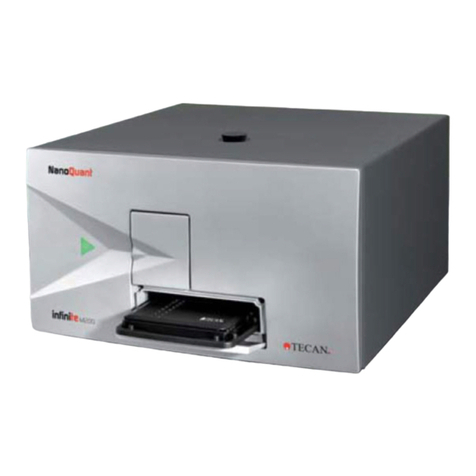
tecan
tecan NanoQuant Plate quick guide
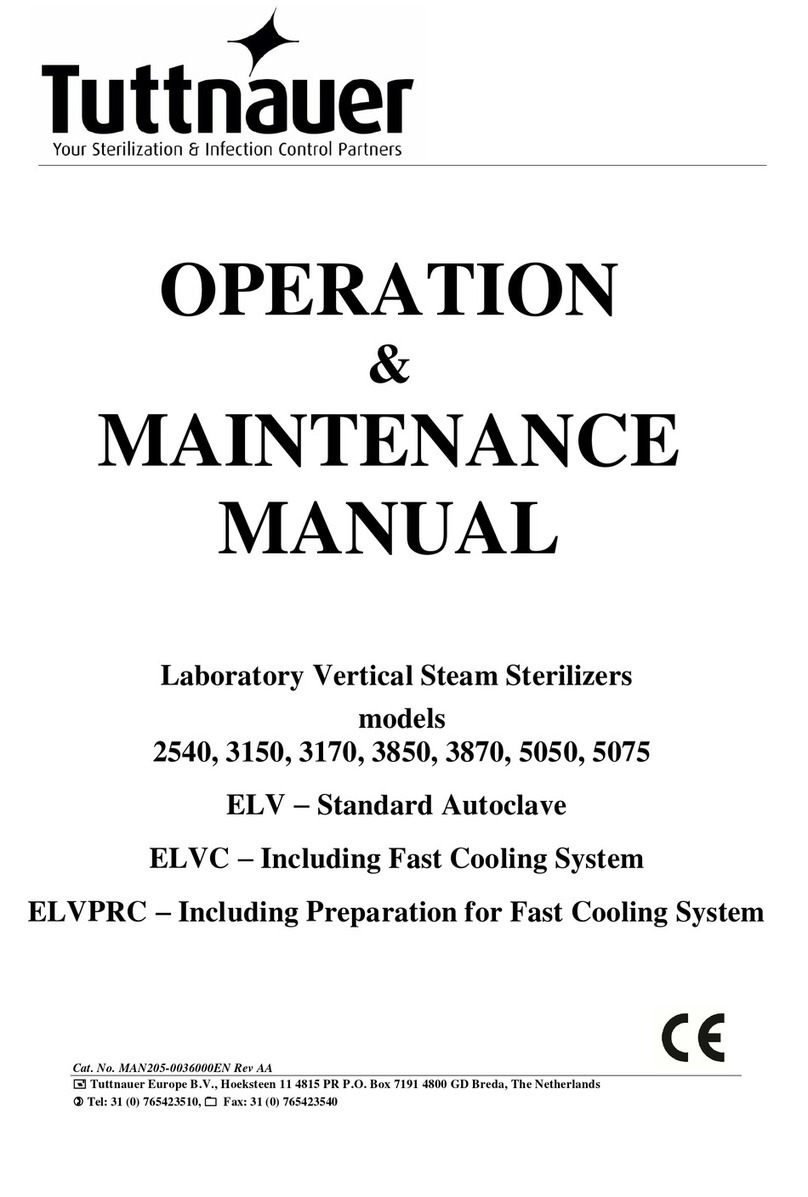
Tuttnauer
Tuttnauer Valueklave 2540 Installation, operation & maintenance manual

Sakura
Sakura Tissue-Tek Prisma Plus Prisma-P-AD installation manual
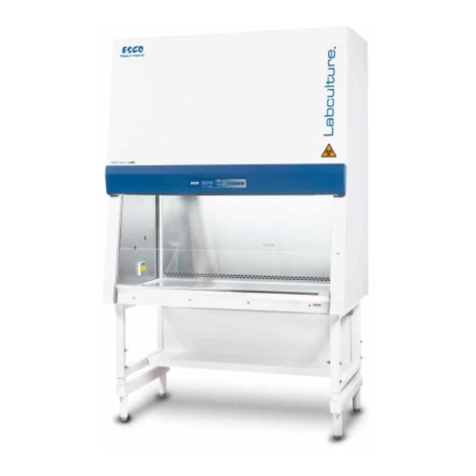
Esco
Esco Labculture User and service manual
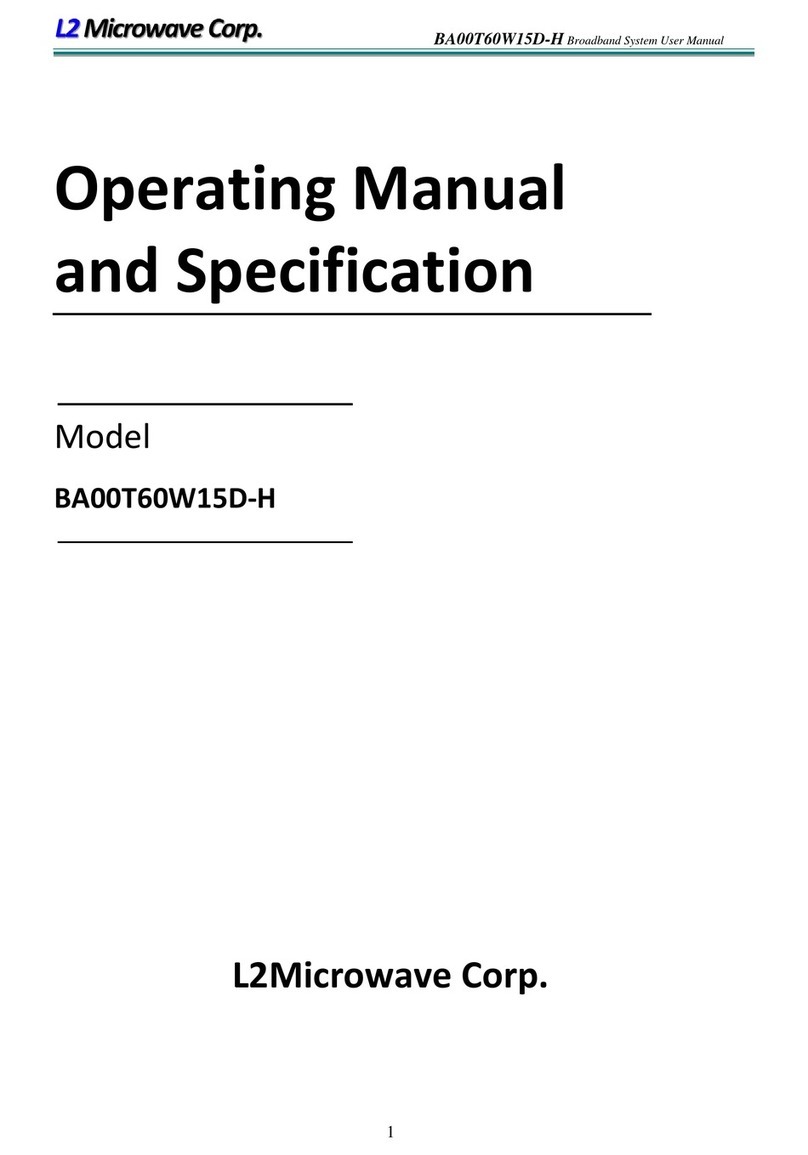
L2 Microwave
L2 Microwave BA00T60W15D-H operating manual
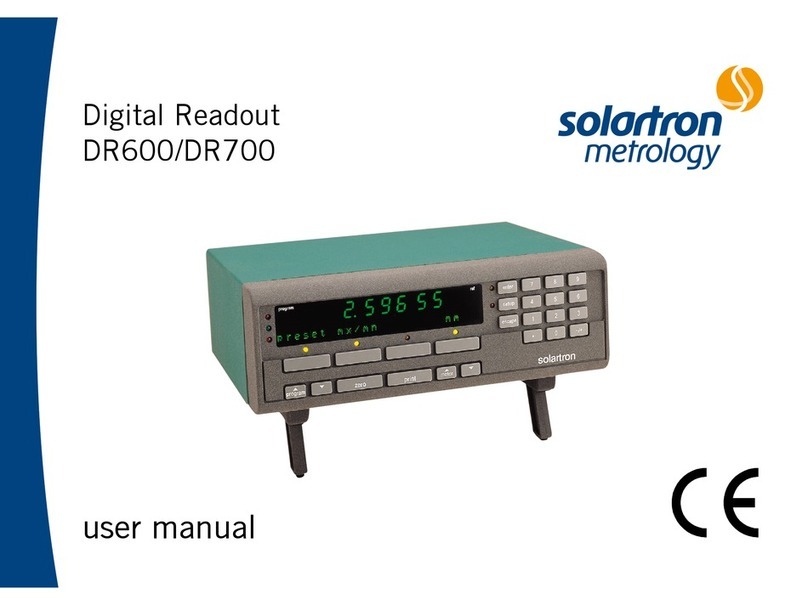
Solartron Metrology
Solartron Metrology DR600 user manual
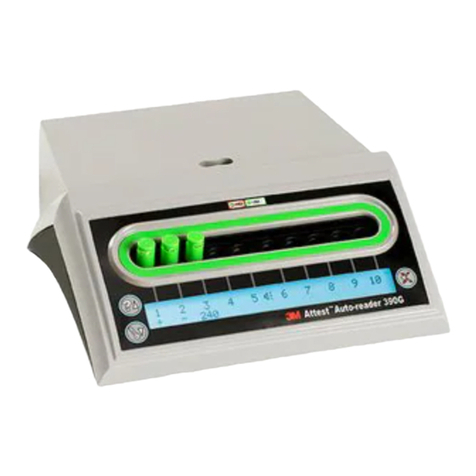
3M
3M Attest Auto-reader 390 Connectivity Technical Specifications
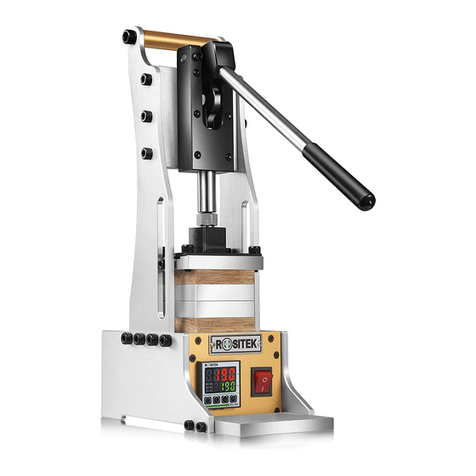
ROSITEK
ROSITEK RMP2 User guide and troubleshooting
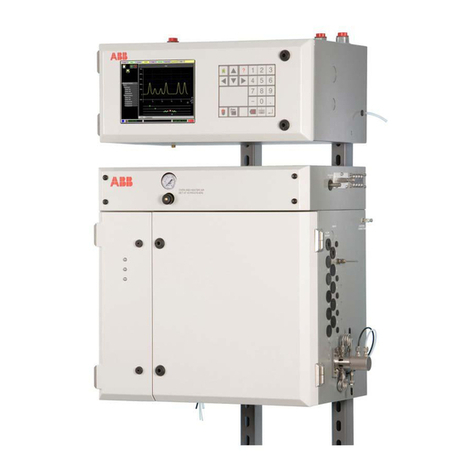
ABB
ABB PGC5000 Series Service instructions
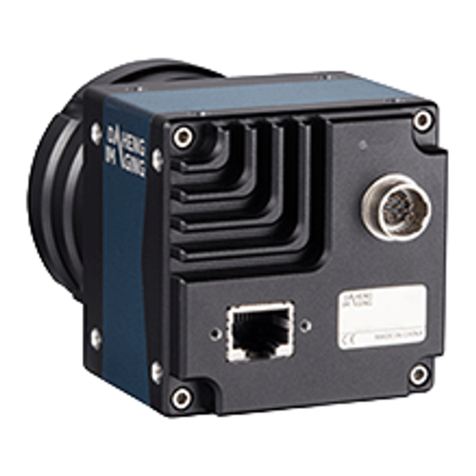
Daheng Imaging
Daheng Imaging MARS quick guide
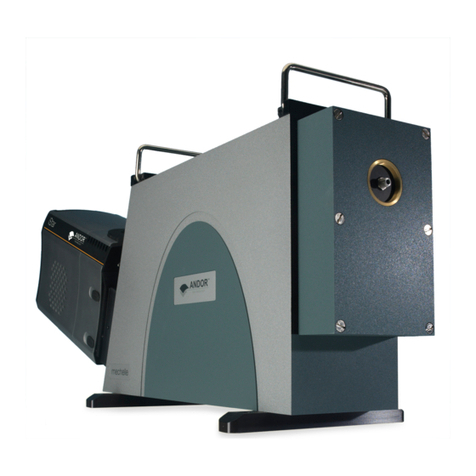
Andor Technology
Andor Technology Mechelle user guide

Milestone
Milestone UltraGROSS Operator's manual
